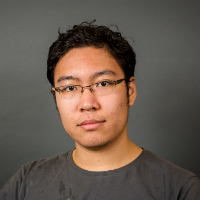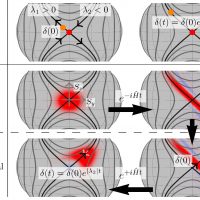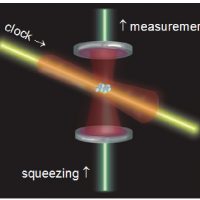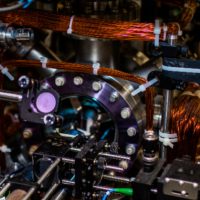- Z. Li Exploring Novel Quantum Physics Using Ytterbium-171 in An Optical Cavity. MIT, 2023.
- Z. Li, S. Colombo, C. Shu, G. Velez, S. Choi, M. Lukin, E. Pedrozo-Peñafiel, V. Vuletic, S. Pilatowsky-Cameo, and R. Schmied. Improving metrology with quantum scrambling. Science, 380(6652):1381-1384, June 2023.
- Z. Li, B. Braverman, S. Colombo, C. Shu, A. Kawasaki, A. Adiyatullin, E. Pedrozo-Peñafiel, E. Mendez, V. Vuletic, Collective Spin-Light and Light-Mediated Spin-Spin Interactions in an Optical Cavity. PRX Quantum, 3(020308), 2022.
- S. Colombo, E. Pedrozo-Peñafiel, A. Adiyatullin, Z. Li, E. Mendez, C. Shu, V. Vuletic, Time-reversal-based quantum metrology with many-body entangled states. Nature Physics, 1817(181), July 2022.
- E. Pedrozo-Peñafiel, S. Colombo, C. Shu, A. Adiyatullin, Z. Li, E. Mendez, B. Braverman, A. Kawasaki, V. Vuletic, D. Akamatsu, and Y. Xiao. Entanglement on an optical atomic-clock transition. Nature, 588:414–418, December 2020. View Abstract
- Y.-X. Liu, Z. Li, A. Ajoy, P. Cappellaro, and J. Hines. High-fidelity Trotter formulas for digital quantum simulation. Phys Rev A, 102(010601), 2020.
- A. Kawasaki, B. Braverman, E. Pedrozo-Peñafiel, C. Shu, S. Colombo, Z. Li, V. Vuletic, Trapping 171Yb Atoms into a One-Dimensional Optical Lattice with Small Waist. Phys Rev A, 102(013114), 2020.
- A. Kawasaki, B. Braverman, E. Pedrozo-Peñafiel, C. Shu, S. Colombo, Z. Li, I. Ozel, W. Chen, D. Levonian, Y. Xiao, V. Vuletic, L. Salvi, A. Heinz, and D. Akamatsu. Geometrically asymmetric optical cavity for strong atom-photon coupling. Phys Rev A January 2019.
- B. Braverman, A. Kawasaki, E. Pedrozo-Peñafiel, S. Colombo, C. Shu, Z. Li, E. Mendez, Y. Xiao, V. Vuletic, M. Yamoah, L. Salvi, and D. Akamatsu. Near-Unitary Spin Squeezing in 171Yb. Phys. Rev. Lett., 122(223203), June 2019.
- P. Peng, Z. Li, K. Xuan Wei, P. Cappellaro, and H. Yan. Comparing many-body localization lengths via non-perturbative construction of local integrals of motion. Phys. Rev. B, 100(214203), December 2018.
Tue April 11, 2023
Quantum Scrambling with Time-Reversal: A Powerful Tool for Exponentially Enhanced Metrology
News type:
Sun June 7, 2020
Entanglement-based Optical Atomic Clock beats the Standard Quantum Limit
News type:





